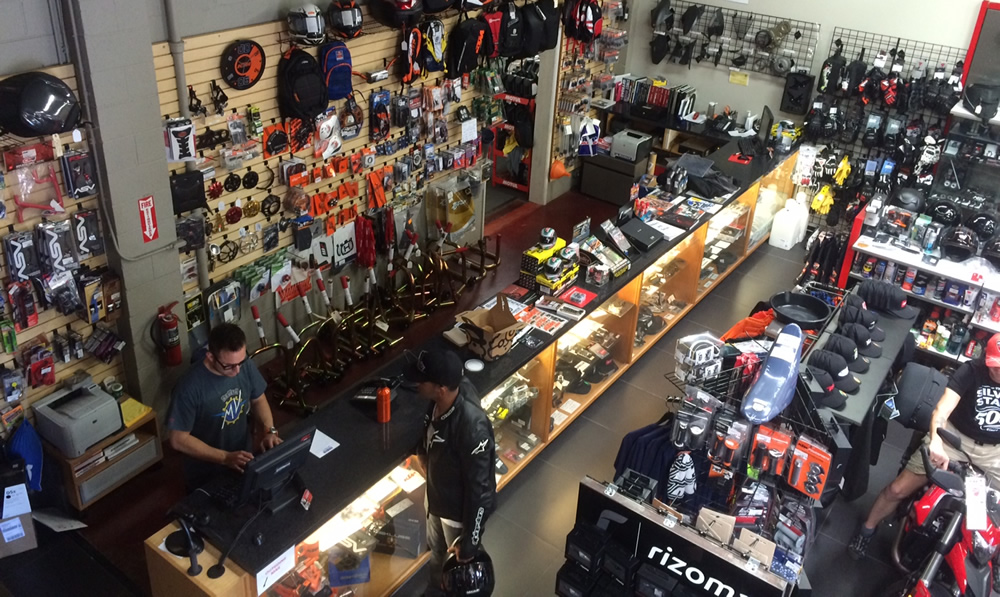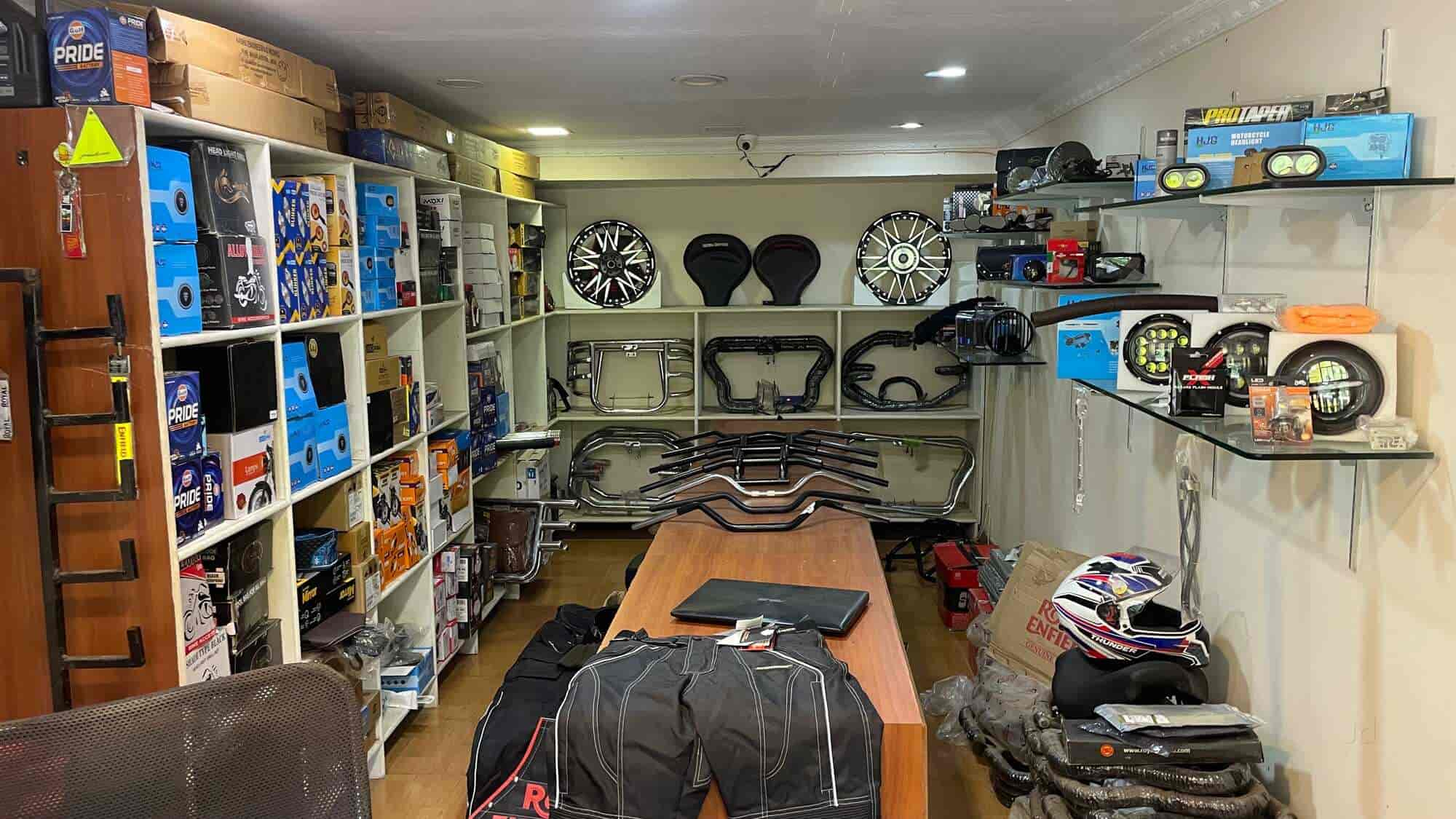Check Out the current Motocross Gear NZ for Every Degree of Rider
Check Out the current Motocross Gear NZ for Every Degree of Rider
Blog Article
Understanding the Vital Parts of a Motorbike: A Comprehensive Overview for Enthusiasts
For motorcycle fanatics looking to boost their riding experience and guarantee their bikes run efficiently, comprehending the crucial elements of a motorcycle is paramount. Each component, from the engine's detailed functions to the essential function of the braking systems, not only influences performance but additionally safety and security and comfort.
Engine Elements

The camshaft plays an essential function in controlling the timing of the engine's valves, making certain the accurate opening and closing essential for effective fuel and air intake, along with exhaust expulsion. This timing is vital to maintaining ideal engine efficiency and efficiency. Additionally, the carburetor or fuel injection system, depending upon the bike version, is in charge of mixing air with fuel in the appropriate proportion for combustion.
The air conditioning system, either air or liquid-based, works to keep the engine's temperature within functional restrictions, stopping overheating and ensuring longevity - motox parts nz. Each component, diligently developed and integrated, adds to the seamless operation of the engine, defining the motorbike's power result and overall efficiency
Transmission System
Essential to the bike's functionality, the transmission system makes sure reliable power transfer from the engine to the wheels. This system makes up a number of crucial components, consisting of the clutch, gearbox, and last drive, each playing a crucial function in translating the engine's power into movement. The clutch, generally run by a hand lever, serves to disengage the engine and involve from the transmission, permitting smooth equipment adjustments and controlled acceleration.
The transmission, typically referred to as the transmission appropriate, includes a collection of equipments that cyclists can by hand shift with to readjust the bike's rate and torque result. These equipments are set up in a sequence that enables the bike to increase smoothly and preserve optimal engine efficiency across numerous rates. A lot of motorbikes use a consecutive transmission, requiring the rider to shift equipments in a fixed order.
Braking Mechanisms
While recognizing the transmission system is essential to utilizing a motorbike's power, equally crucial is the ability to manage and stop that power effectively, which is where braking mechanisms come right into play. Brakes are critical for security and performance, offering the motorcyclist with the necessary control to browse different surfaces and problems. Commonly, motorbikes feature 2 types of braking systems: disc brakes and drum brakes.
Disc brakes are a lot more prevalent in modern motorcycles due to their remarkable performance. This system offers far better heat dissipation, constant performance, and enhanced quiting power, particularly in wet conditions.
On the other hand, drum brakes, though much less typical, are still found in some motorbikes. They function by pressing brake shoes versus the internal surface area of a drum attached to the wheel. While generally less efficient in warm dissipation and quiting power, drum brakes are simpler and much more affordable.
Understanding these stopping systems' Learn More Here nuances allows riders to maintain their bikes properly and appreciate the engineering that guarantees risk-free and reliable stopping.
Suspension and Guiding
Suspension and guiding systems are essential elements that significantly influence a bike's handling and adventure convenience. The suspension system, containing forks at the front and shock absorbers at the back, soaks up roadway irregularities, boosting stability and control. Front forks, usually telescopic or inverted, compress and rebound to alleviate effects, while back shock absorbers keep tire contact with the road, essential for traction and safety.
Guiding, focused around the handlebars, connects the biker to the bike's directional control. The steering head bearings ensure smooth operation, permitting accurate maneuverability. Proper placement and maintenance of these bearings are crucial for predictable guiding action and minimizing biker exhaustion.
The suspension's adjustability is another vital element; preload, damping, and rebound settings permit personalization to match various riding designs and conditions. This flexibility is essential for enhancing performance, whether browsing city roads or tackling rugged trails. Developments like electronic suspension systems supply real-time changes, boosting adventure top quality throughout diverse surfaces.

Electric Systems
After ensuring a regulated and smooth ride through efficient suspension and steering systems, focus transforms to the electric systems, a pivotal facet of contemporary motorbikes. These systems play an essential function not only in beginning the engine but also in powering numerous elements that improve the performance and safety and security of the motorcycle.
At the heart of a motorbike's electric system is the battery, which stores electrical energy essential for starting the engine and powering complementary systems - mx gear nz. The alternator or generator, paired with the rectifier-regulator, guarantees the battery remains billed while the motorcycle is in operation, transforming power into electric power and keeping voltage degrees
The ignition system, an additional vital component, is accountable for igniting the air-fuel combination in the engine's cylinders. Modern motorcycles usually make use of an electronic ignition system, using higher effectiveness and reliability compared to typical systems.
Lights systems, consisting of headlights, tail lights, and signs, are additionally vital, guaranteeing visibility and safety and security for the cyclist. Added electronic components such as sensing units, control units, and useful site displays add to sophisticated features like fuel injection monitoring, anti-lock stopping systems (ABDOMINAL), and electronic control panels, even more improving the riding experience.
Verdict
A thorough comprehension of a motorcycle's necessary components, including the engine, transmission system, braking devices, suspension, guiding, and electric systems, is indispensable for fanatics intending to maximize convenience, efficiency, and safety and security. Mastery of these elements permits educated decisions concerning upkeep and upgrades, eventually enhancing the riding experience. By incorporating this expertise, motorcyclists can ensure their motorcycles operate at peak efficiency and motorcycle cables reliability, therefore taking full advantage of both pleasure and durability of their cars.
For motorcycle enthusiasts looking to elevate their riding experience and ensure their bikes run smoothly, recognizing the crucial parts of a bike is paramount.Essential to the bike's capability, the transmission system guarantees efficient power transfer from the engine to the wheels.While comprehending the transmission system is essential to taking advantage of a bike's power, similarly vital is the capability to control and quit that power properly, which is where stopping mechanisms come right into play. Commonly, motorbikes include 2 kinds of braking systems: disc brakes and drum brakes.
A detailed understanding of a bike's necessary components, including the engine, transmission system, stopping devices, suspension, guiding, and electric systems, is crucial for enthusiasts intending to maximize convenience, efficiency, and safety and security.
Report this page